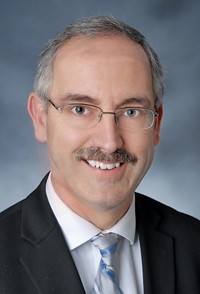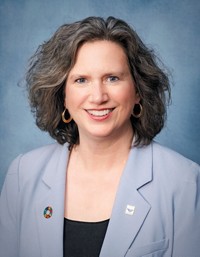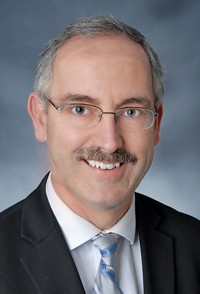Advertisement
Grab your lab coat. Let's get started
Welcome!
Welcome!
Create an account below to get 6 C&EN articles per month, receive newsletters and more - all free.
It seems this is your first time logging in online. Please enter the following information to continue.
As an ACS member you automatically get access to this site. All we need is few more details to create your reading experience.
Not you? Sign in with a different account.
Not you? Sign in with a different account.
ERROR 1
ERROR 1
ERROR 2
ERROR 2
ERROR 2
ERROR 2
ERROR 2
Password and Confirm password must match.
If you have an ACS member number, please enter it here so we can link this account to your membership. (optional)
ERROR 2
ACS values your privacy. By submitting your information, you are gaining access to C&EN and subscribing to our weekly newsletter. We use the information you provide to make your reading experience better, and we will never sell your data to third party members.
Environment
Enlist and Engage!
by ANNE T. O'BRIEN, ACS DISTRICT I DIRECTOR
January 10, 2005
| A version of this story appeared in
Volume 83, Issue 2
Some years ago, I remember saying that the "blurry borders" of chemistry needed attention. We need now to take this new chemistry, this inter/trans/multidisciplinary, this at-the-interface chemistry, in hand. We need to welcome it, to encourage it to thrive within ACS--quickly. We need to do whatever it takes. We will have to change.
The setting. In 2004, a university chemistry student traps bacteria in a sol-gel. After the bacteria die, the student grows gold nanotubes in the cavities they leave.
In 1970, chemistry degrees represented 62% of those granted in chemistry and the related fields of atomic and molecular physics, atmospheric physics and chemistry, geochemistry, biochemistry, molecular biology, soil science, chemical engineering, and materials science. In 2002, the figure was 41%.
National meeting programs include symposia on nanotechnology, genomics, informatics, novel energy sources, materials science, bioengineering, molecular recognition, self-assembling peptides, cyber infrastructure, and biocatalysis. Are these topics clearly visible to you?
Increasingly, we work on multifaceted problems (pharmaceuticals, silicon circuit alternatives, sensors, fuel cells) in teams representing many sciences. More and more, we know others as equal partners, understanding and valuing what they bring to the table.
Membership is increasingly linked to the life sciences. Most new jobs in chemistry in the past 20 years have come from the pharmaceutical industry and other life sciences-related areas.
Among newer ACS journals are Molecular Pharmaceutics, the Chemistry of Materials, Nano Letters, the Journal of Chemical Theory & Computation, and ACS Chemical Biology (coming soon). Sections of Chemical Abstracts grow unevenly, some faster than others.
Outside of ACS, new, smaller scientific societies and organizations--some of them meeting virtually via Web conferences--attract our colleagues.
Our universe is changing.
What do our colleagues in new, emerging, inter/trans/multidisciplinary areas need? Recognition; visible identity; independence; appropriately focused and publicized meetings; and a community, one encouraging and dynamic home in which to share and belong--all of these?
Can we be sufficiently flexible and inventive to satisfy these requirements? Will colleagues in emerging areas say, "Why go anywhere else? ACS offers everything we need!"
What is ACS doing now? The ACS Strategic Plan clearly broadens the definition of chemistry to encompass the range of fields in which chemical professionals practice science. The society is in the process of exploring the role that alliances and joint ventures can play here. ACS Immediate Past-President Charles P. Casey and Chair of the Board Jim Burke recently engaged council in a discussion on the multidisciplinarity of chemistry.
The Joint Board-Council Task Force on the Multidisciplinarity of Chemistry is assessing the potential impact, challenges, and opportunities multidisciplinarity presents. It is focusing on membership, education, meetings, and journals and will report in 2006. The members of the task force are H. N. Cheng (Hercules, NMR of polymers); Jean Chmielewski (Purdue University, protein assembly); Richard Crooks (Texas A&M, microsensors); Barbara Garrison (Penn State, modeling); Paula Hammond (Massachusetts Institute of Technology, polymeric materials); Nancy Jackson (Sandia National Labs, catalysis); Sangtae Kim (Purdue U, computational nanofluidics); Deborah Leckband (U of Illinois, bioengineering); Cynthia Maryanoff (Cordis, drug-eluting devices); Paul J. Reider (Amgen, organic asymmetric synthesis); and James T. Yardley (Columbia, molecular electronics).
The Committee on Divisional Activities convened a "Summit on the Expanding Boundaries of the Chemical Enterprise & Membership within the American Chemical Society." Technical divisions are working to redefine, reinvent, and reposition the society to reflect chemistry's multidisciplinarity.
ACS President William F. Carroll has undertaken "Chemistry Enterprise 2015" with the goal of understanding the forces that drive the chemistry enterprise today and the changes it will undergo in the next 10 years.
What do you think? Should we:
◾ Highlight new theme areas in our national meeting programs, give them clear visibility, and publicize them broadly outside our membership?
◾ Explore a flexible Division of Molecular Science to give visibility to symposia and programs in new areas?
◾ Offer Web conferences so that scientists can attend real/virtual meetings without traveling?
◾ Foster new scientific communities with contemporary technologies; for example, create sharing mechanisms through a collaborative website? Report rapidly via blogs? Send scientific alerts continuously through rich site services?
◾ Offer small, on-demand, Web-based e-learning "chunks" to introduce members to new fields?
◾ Work toward a more dynamic and fluid society structure to encourage new communities? How?
◾ Focus attentively on how we look from outside? How can we become more openly welcoming, flexible, contemporary, "with-it"?
◾ How should we reach out proactively to those who use chemistry but who may not think of themselves as "chemists"? Are we visible to researchers in new areas?
◾ Have we taken off our own shoes to walk in the new scientists' moccasins?
What can you do? You have insight and experience. Give ACS the benefit of your thinking. Help welcome current opportunities. The new "interface chemistries" hold profound implications for the growth of our society, for the scientists we should be serving, for all our society does. Please contact your local section, division, or ACS governance representatives to add your voice to this conversation. We need to hear from you. Feel free to e-mail me (ronanne@attglobal.net) with your suggestions.
Enlist in this effort! Engage in the dialogue!
Views expressed on this page are those of the author and not necessarily those of the ACS Board.






Join the conversation
Contact the reporter
Submit a Letter to the Editor for publication
Engage with us on Twitter